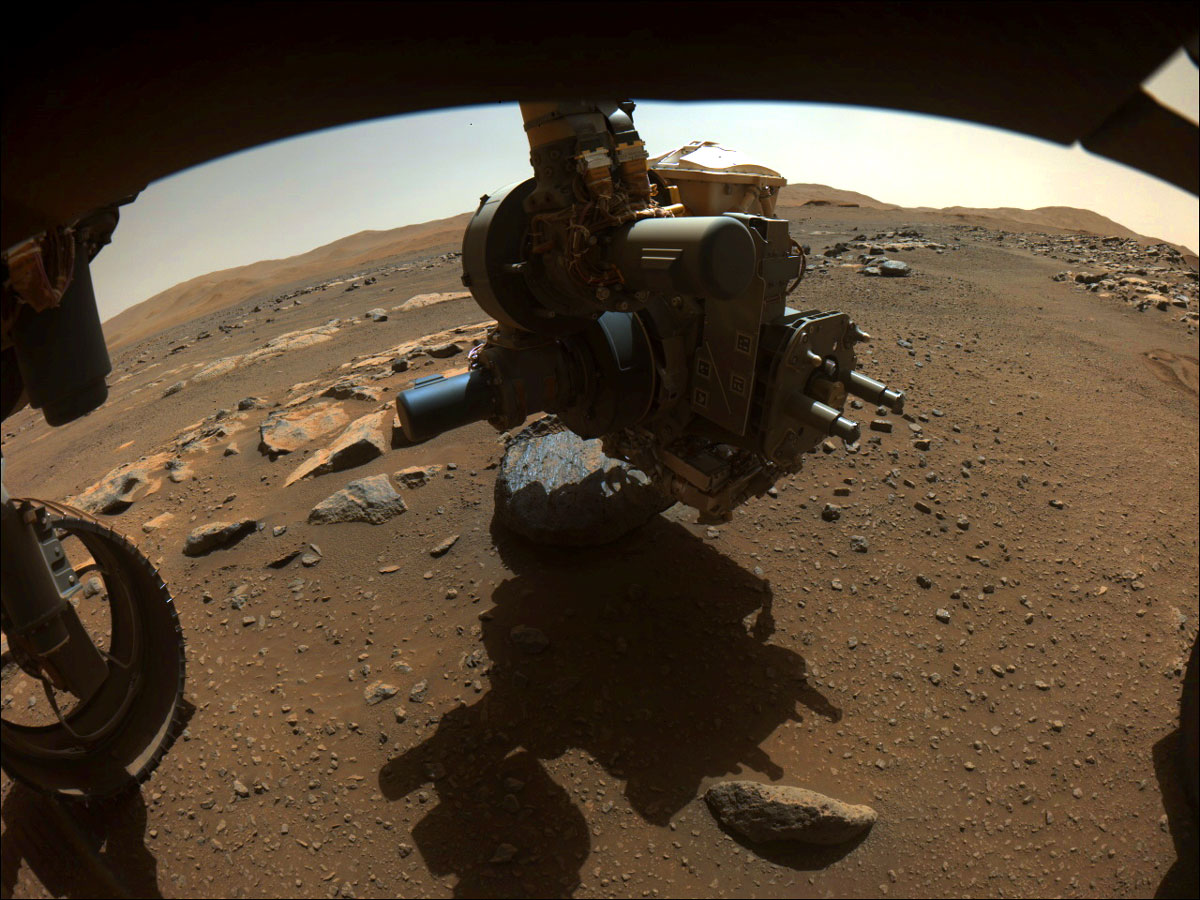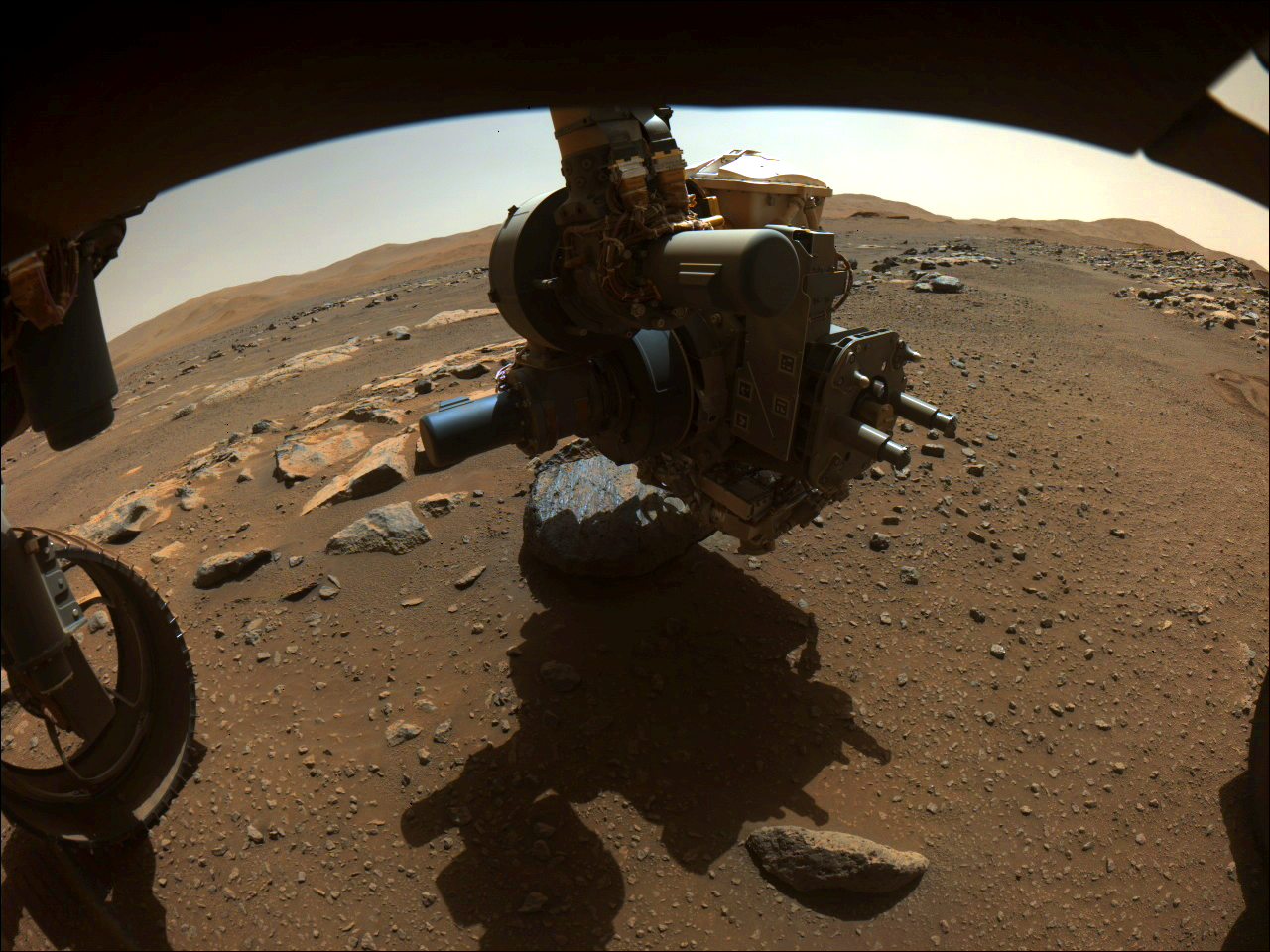Perseverance Gets to Know ‘Rochette’

| Credit | NASA/JPL-Caltech |
|---|---|
| Language |
|
On Aug. 27, 2021, NASA's Perseverance rover captured this image of the science-instrument-laden turret at the end of its robotic arm getting close to the rock nicknamed "Rochette."
Perseverance had just abraded a circular patch, nicknamed "Bellegarde," of the rock. This image was taken when the SHERLOC (Scanning Habitable Environments with Raman and Luminescence for Organics and Chemicals) instrument on the turret was using its WATSON (Wide Angle Topographic Sensor for Operations and eNgineering) camera to take a close-up image of Bellegarde on the 185th sol (Martian day) of Perseverance's mission.
This image, taken by one of Perseverance's Hazard Avoidance Cameras, has been processed to enhance contrast.
A key objective for Perseverance’s mission on Mars is astrobiology, including the search for signs of ancient microbial life. The rover will characterize the planet's geology and past climate, pave the way for human exploration of the Red Planet, and be the first mission to collect and cache Martian rock and regolith.
The Mars 2020 Perseverance mission is part of NASA’s Moon to Mars exploration approach, which includes Artemis missions to the Moon that will help prepare for human exploration of the Red Planet.
Subsequent missions by NASA in cooperation with ESA (European Space Agency) would send spacecraft to Mars to collect these cached samples from the surface and return them to Earth for in-depth analysis.
NASA’s Jet Propulsion Laboratory in Southern California built and manages operations of the Mars 2020 Perseverance rover for NASA.
For more information about the mission, go to: https://mars.nasa.gov/mars2020

